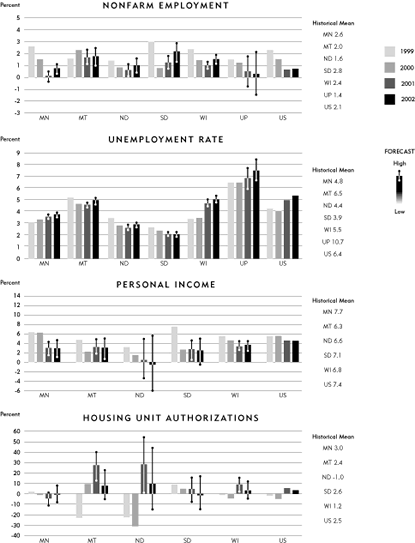
Employment growth will slow. Employment levels will increase in 2001 in all states, but growth will remain below 2000 levels, except in South Dakota, which will grow slightly faster. Employment growth will drop below 1 percent in Minnesota, North Dakota and the Upper Peninsula of Michigan. In 2002 employment growth will pick up in all areas, expect the Upper Peninsula of Michigan, where growth will decrease slightly. Employment growth in 2002 will remain below historical levels in all states.
Unemployment rates are expected to increase. In 2001 unemployment rates will rise in Minnesota, Wisconsin and the Upper Peninsula of Michigan and decrease in Montana and the Dakotas. Rates will climb in all states in 2002, except South Dakota, where the rate will remain level. However, unemployment rates will remain below historical averages.
Personal income will grow modestly. In 2001 personal income will grow slower than a year earlier in all states, except Montana and South Dakota. In 2002 personal income growth is anticipated to increase at slightly lower rates compared with 2001 in all states, except North Dakota, where personal income is expected to decrease.
Homebuilding will advance in most areas of the district. In 2001, housing units authorized are expected to increase faster than historical averages in all states, except Minnesota, where authorizations will decrease. In Montana and North Dakota, authorization levels are forecast to increase about 20 percent. In 2002 housing units authorized will increase above historical averages in all states, except Minnesota and South Dakota, where levels are predicted to decrease slightly.
Return to District Economic Conditions




